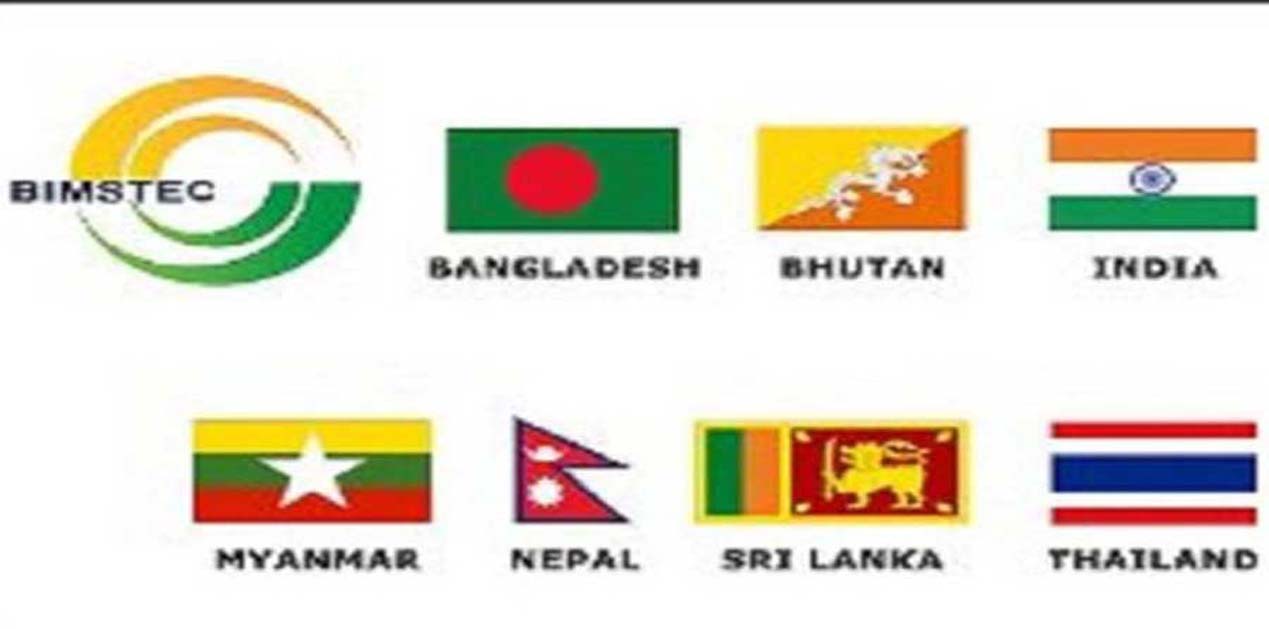Over the last two decades, the world economy has undergone a sea change. From technology to politics; very few things remain the same. But, BIMSTEC Free Trade Agreement (FTA) continues to be where it was. Mooted in 1998, it is still under discussion. After at least 20 rounds of trade negotiation, there is barely any progress on key issues like pruning of sensitive list and para-tariffs; which once invited the failure of the South Asian free trade agreement (SAFTA). The experience is important as five out of seven BIMSTEC members are from South Asia.
And that takes us to question: for how long will BIMSTEC discuss an FTA and why? There is every reason to believe that the framework of negotiation, as set in 2004, has outlived its purpose. This is particularly true for India, which barely has room for fresh tariff concessions to the region. It might be better for the group to abandon or suspend the trade negotiations and focus on wider trade facilitation issues, as the BBIN (Bhutan-Bangladesh-India-Nepal) sub-region does.
Booming Trade
BIMSTEC connects the more integrated part of South Asia (including India, Nepal, Bhutan, Bangladesh and Sri Lanka) with the ASEAN nations of Myanmar and Thailand. While India is the largest partner in BIMSTEC, Thailand is the lone export economy in the group. Between 2009 and 2019, the intra-regional trade increased by roughly three times to nearly $46 billion. With $25.5 billion regional export and $10.8 billion import, India dominates the regional trade.
According to the ITC trade map, the share of the region in India’s total export doubled to eight percent. The share of imports increased from 1.68 percent to 2.2 percent of total. During the period, India’s total exports and imports grew by roughly 80 percent each. Approximately, four-fifth of India’s $18 billion export growth in the region, in the last decade, came from South Asian partners, contributing less than 10 percent of intra-regional trade.
BBIN nations in particular are the growth engines. As in 2019, Bangladesh was the ninth largest market for Indian goods, followed by Nepal (10th). They are top importers not only from South Asia but also from South East Asia excepting Singapore (5th).
Thailand ranks 21st in India’s list of export destinations, behind its ASEAN peers Malaysia (11th) and Indonesia (20th). However, it contributes two-third of India’s imports from BIMSTEC. The bilateral trade is in Thailand’s favour and the gap ($2.7 billion) has widened by 50 percent over the last decade.
Clearly, India-BIMSTEC trade is booming without the regional FTA.
India has bilateral preferential trade agreement with all BIMSTEC partners excepting Bangladesh and Myanmar. This is over and above the maze of multilateral trade agreements –SAFTA, India-ASEAN FTA, Asia Pacific Trade agreement (APTA) – overlapping the region. Such agreements, however, have little role behind India’s robust export growth in the region.
FTA for Imports
A dominant majority of Indian exports to prime markets of Bangladesh, Nepal and Sri Lanka; take the non-preferential Most Favorite Nation (MFN) route, ignoring high para-tariffs (Bangladesh and Sri Lanka). This is to avoid the long list of sensitive items in FTAs. Hardly 20 percent Indian exports to Sri Lanka avail the preferential route. This is in line with the policy think-tank NITI Aayog’s finding on the Indian exports as a whole.
On the other hand, imports ride on unilateral and/or bilateral tariff concessions offered by India. Beginning 2012, India is unilaterally offering duty-free, quota-free market access on 98 percent tariff lines to Least Developed Countries (LDCs). Bangladesh, Nepal and Myanmar are beneficiaries of this scheme. The introduction of GST in 2017 removed para-tariffs - like additional or special import duties.
These two decisions, along with the preferential treaties, played a crucial role in shoring up India’s imports from the region. The impact of GST was particularly pronounced. (https://www.vifindia.org/2020/august/24/india-s-goods-and-services-tax-and-the-neighbourhood).
Between 2009 and 2019, imports from Sri Lanka increased by three-times and Bangladesh by 4.5 times – faster than the growth in Indian exports to respective countries. Competency issues restricted Nepal’s gain to 56 percent, higher than the decadal gain in its total exports. Considering its political and strategic interests in South Asia and the low volume of imports vis-à-vis exports; India may not find much to complain against Bangladesh or Nepal.
However, that’s not true for an industrially developed Thailand, which is making the most of the Early Harvest Scheme (EHS), under the proposed India-Thailand FTA. Made fully operational in 2006, the EHS opened floodgates to easy import of finished goods - like auto parts, electronic goods, electrical appliances etc – from Thailand. The terms of EHS are easier than the India-ASEAN FTA, which came into force in 2010. In 2019, Indian auto industry, which is a major importer from Thailand, blamed FTAs for failure of the ‘Make-In-India’ campaign. In November 2020, India announced a $20 billion production-linked incentive to scale up domestic manufacturing in 10 select sectors that includes prime imports from Thailand.
No Relevance Left
Clearly, the long wait had cost BIMSTEC FTA its relevance to India. This is similar to the global trend. The primary interest of the country lies in managing its political interests in the neighbourhood and promoting efficient domestic manufacturing of global scale. While the latter is taken care of by PLI and other such initiatives under the ‘Atmanirbhar Bharat’ programme; unilateral and bilateral initiatives are proving more effective in mitigating the political and strategic needs in the neighbourhood.
BBIN, in particular, has created a classic case for using bilateral relations for facilitating regional cooperation. The electricity grid connectivity between the four nations created a case for regional participation in power trading. BIMSTEC can follow these examples to widen the scope of cooperation and improve the regional economic efficiency. There is simply no point in adding another layer to the maze of FTAs or continuing with another useless negotiation simply to fulfill some bureaucratic commitment.
It is time to think afresh and the argument may hold good for most of the two-and-a-half dozen FTA proposals that are in different stages of discussion by the Indian authorities.
(The paper is the author’s individual scholastic articulation. The author certifies that the article/paper is original in content, unpublished and it has not been submitted for publication/web upload elsewhere, and that the facts and figures quoted are duly referenced, as needed, and are believed to be correct). (The paper does not necessarily represent the organisational stance... More >>
Image Source: https://thefinancialexpress.com.bd/uploads/1502090860.jpg











Post new comment